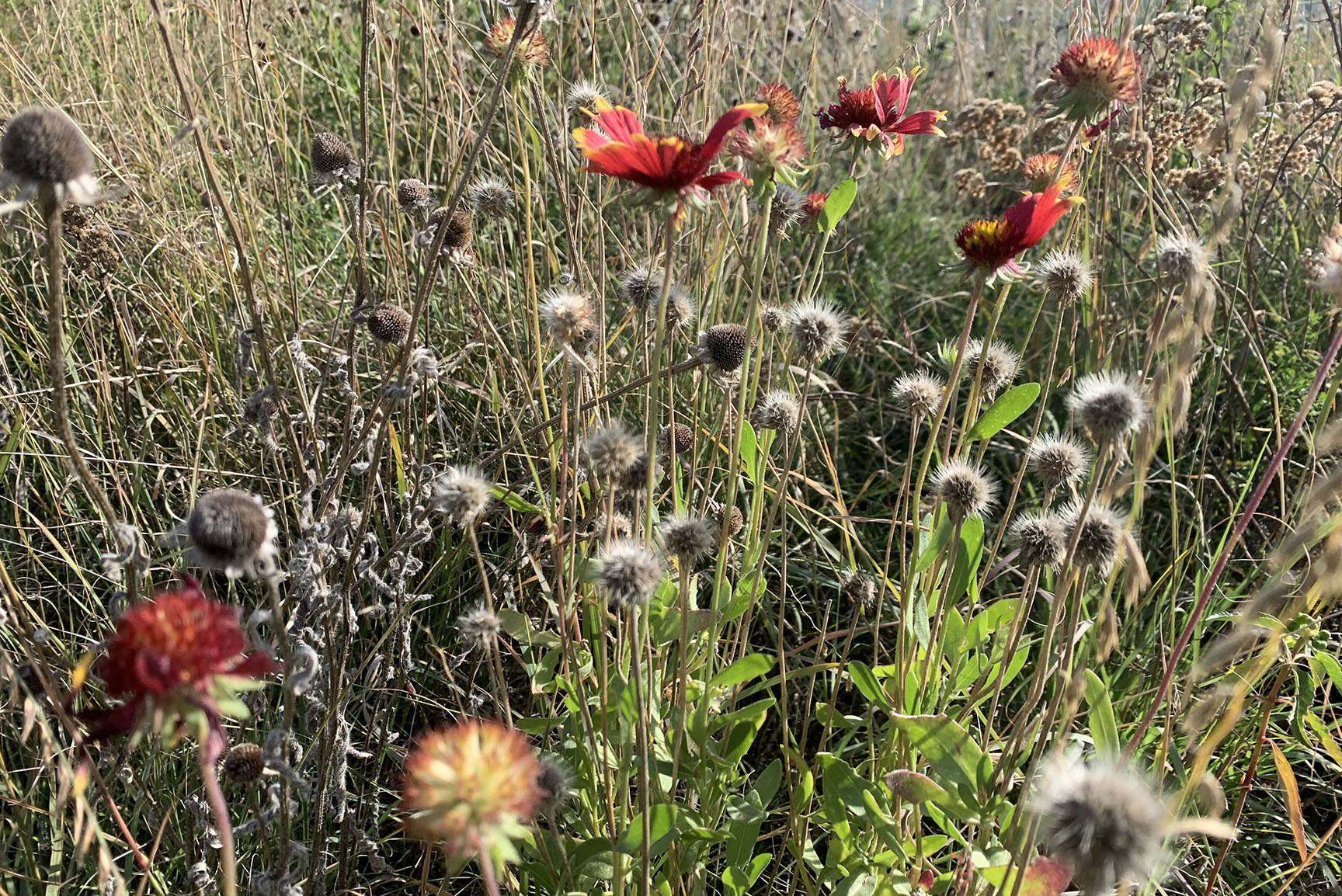Browning prairie plants provide vital cover

As the dryer weather, the cooler temperatures and the shorter days of an Omaha fall set in, the prairie plantings by the Truhlsen Eye Institute and Lot 64 look different.
Prairie plants detect major seasonal changes and respond accordingly, often by losing their leaves or browning in color. During this time of year, it is tempting to see these sparse, browning plants as an eyesore, but there are many benefits to leaving prairie plants in place during the fall and winter.
Pollinators such as bees, butterflies, moths and birds play a vital role in plant reproduction and species survival. Plant debris, tree bark and stray grasses can provide native bees with a dry and warm habitat for the winter.
Many butterfly species, such as swallowtails and sulphurs, spend the wintertime in a chrysalis, hanging from a plant stem or tucked into the soil. Other butterfly species spend the winter as caterpillars, nesting into a host plant or in a fallen leaf.
Dormant plant beds also provide a vibrant habitat for birds and other insects in the wintertime. Birds are attracted to the insect-rich habitat of a winter garden, where they consume insects and seeds dropped from undisturbed plant heads. When people remove plants and gardens in the fall and winter, it can tear away the habitats of these essential pollinators.
Leaving prairie plants untouched in the fall and winter goes beyond a respect for wildlife. It nurtures the health of the entire ecosystem by providing essential soil and water benefits. Soil is home to a thriving ecosystem of nutrients and living organisms, and it plays a significant role in storing carbon dioxide. Prairie soils in particular contain extensive root systems, and they are especially rich in organic material from the decomposition of plant material from previous seasons.
Removing the protective layer of plants and leaves from the soil leaves it vulnerable to moisture loss and temperature change. Disturbing the composition of soil also disturbs its vital water filtration, carbon storage and flood mitigation capabilities, all important to human health.
Encountering sparse or browning plants during the winter months offers a chance to think about all the life they sustain. To learn more, read The Lowdown on the Prairie article from the Chicago Botanic Garden, or consider planting a prairie garden.
